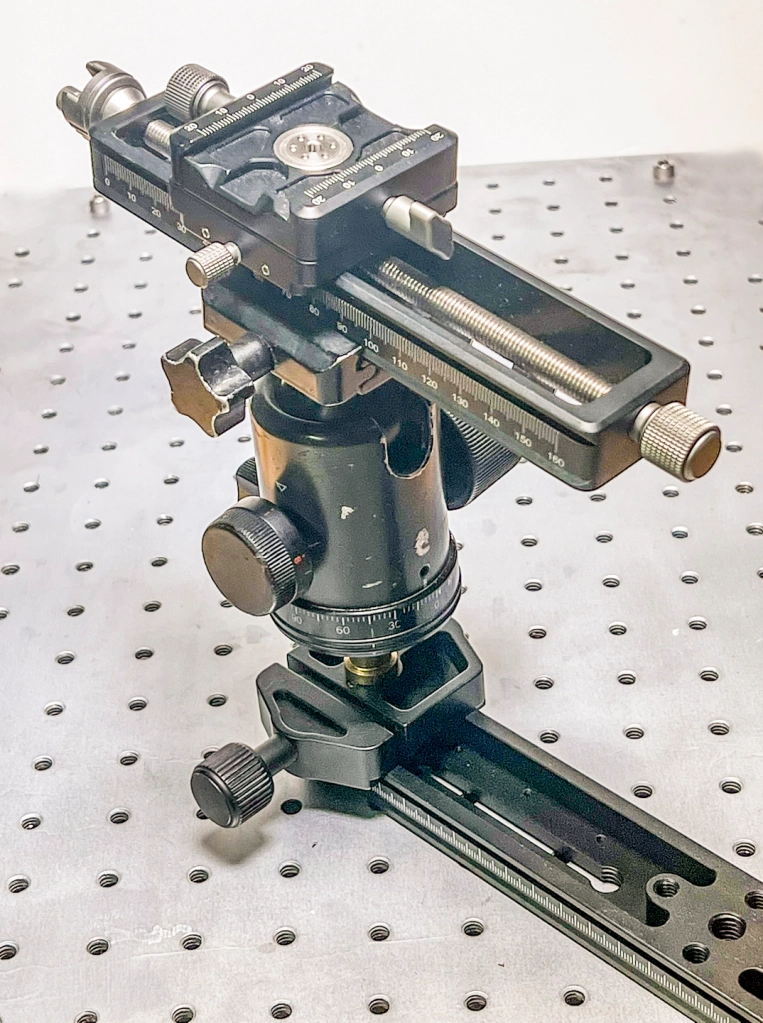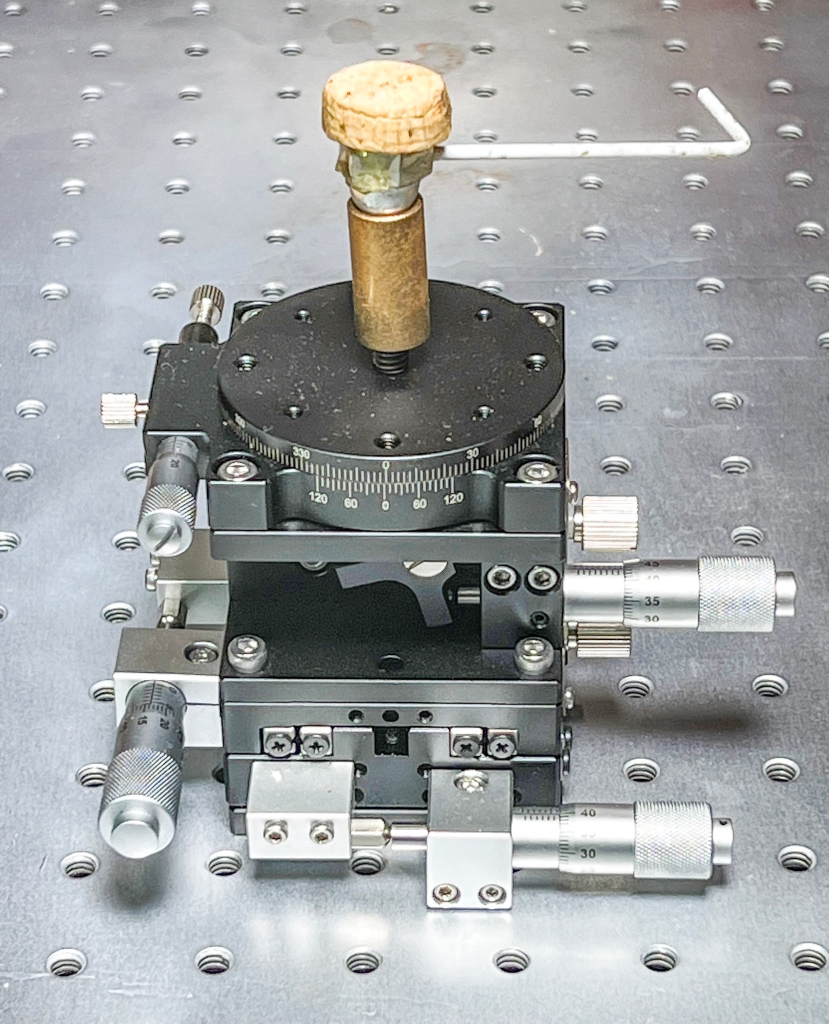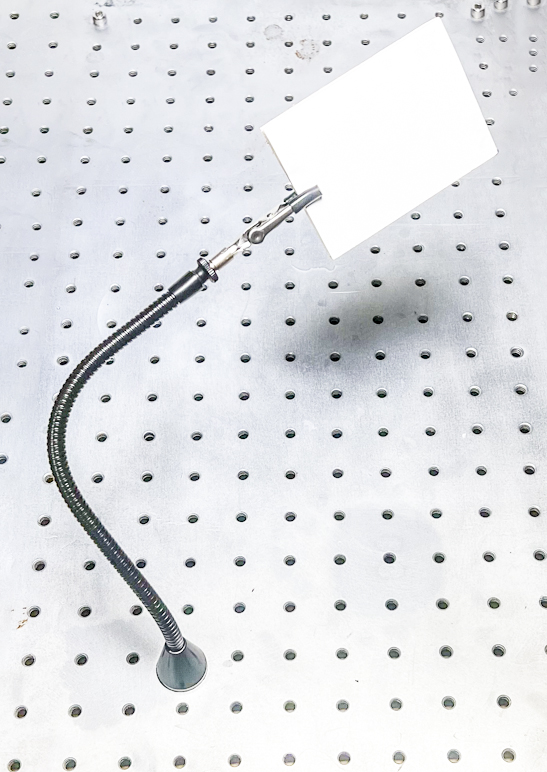Photographers who have practiced any macro work at all clearly understand that, as the image is magnified in the camera, image motion and vibrations are magnified as well. This results in images that are less than tack sharp. This is an especially annoying situation as the image magnification exceeds 100% of life size or 1:1.
Therefore, the traditional method to overcome the problem is to use a tripod, mirror lock-up and high-speed electronic flash. While these methods help a great deal, focusing and composition are a bit of a frustration when moving large or massive pieces of equipment.
This document describes a setup using equipment designed for smaller photographic applications. This is a precision bench based upon a steel optical breadboard that is designed for laboratory optical experiments with very precise measurements.

The unit pictured measures 12 x 24 inches with ¼ inch x 20 t.p.i. holes spaced precisely every one inch. As a bonus, the ¼ inch holes are standard for photographic gear like tripods and flash mounts. It is easy to line pieces up due to the precision hole configuration.
The setup includes a mount for the camera, a mount for the specimen/subject, articulating arms for the flashes, and bendable arms for reflector cards, etc. A mounted print provides a background. Everything is assembled on the breadboard base which eliminates any extraneous movement between subject and camera. All this material is available online.
The camera is supported by a long Arca rail and a tripod ball head. The rail provides distance adjustment between lens and subject. Also, as part of the camera support is a Nisi macro focusing rail. This rail will allow manual, repeatable focus stack distances of 0.3mm.
The Arca standard configuration of the rail, tripod head, and slider makes attachment and alignment of the camera easy.

If possible, an early incorporation of Arca standard plates and mounts into one’s gear makes a sound, long-term investment as every piece of equipment is ready to assemble with all the same dimension mounts.
On the other end beyond the lens is a precision, three-axis XYZ rotational linear stage. With movement calipers calibrated in thousandths of an inch, precise movement across measured distances is possible.

On top of the stage is a removable and adjustable specimen holder designed for pinned insects and other tiny specimens. For larger specimens the holder is removed by its threaded screw.
For macro photography focus, framing, and composition require tiny movements. This linear stage provides the perfect solution.
For the mounting of flash heads an eleven-inch articulating arm fits the need perfectly. With a standard ¼ inch screw on each end, positioning the flash anywhere on the breadboard is possible depending upon the lighting requirements.

For this setup, a pair of Godox MF12 macro flashes are used. The camera-mounted control unit wirelessly triggers each flash independently.
For extra light modification, flexible arms with magnetic bases are used for paper or foil reflectors and for black subtractive cards or translucent diffusers.

A benefit of this modular component design is that it may be disassembled for storage or transportation. When assembled, the unit may also be e with confidence in the field instead of a tripod and portable table.
By shopping carefully, this macro bench may be purchased for under $500.00 not including camera and flash system. The best sources include eBay for the breadboard and linear stage and Amazon or B&H Photo & Video for the other components.
Copyright © 2023 Brian Loflin. all rights reserved.

